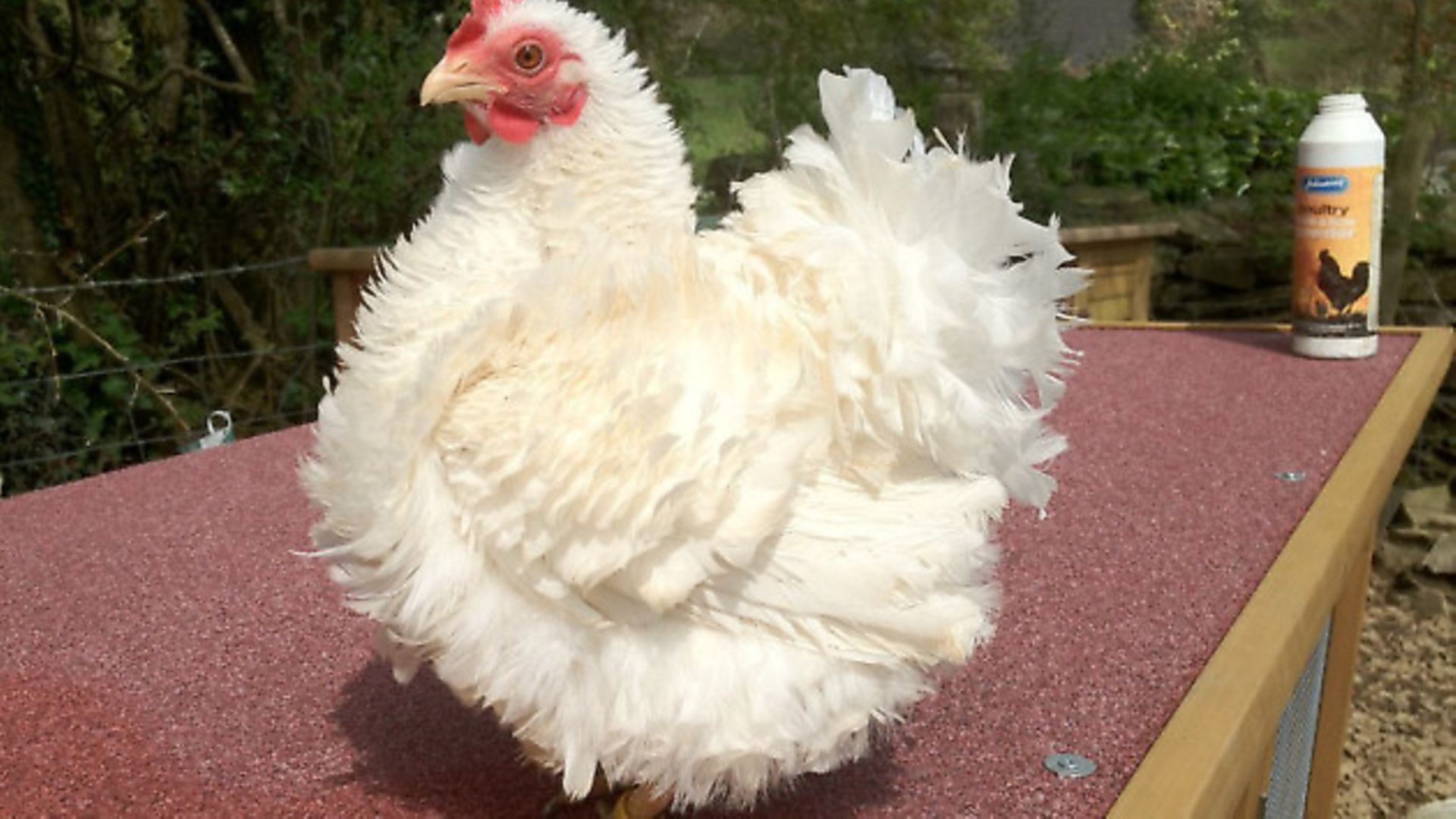The Frizzle breed has enjoyed something of a revival. Grant Brereton reports

Perhaps quite obviously named, the Frizzle breed is of uncertain descent but most likely originated from Asia.
Frizzles are quite unusual to look at and attract attention in the show pen as purely an ‘exhibition breed’. Their ‘shabby chic’ appearance appeals to many people, particularly female keepers who seem to be in the majority – not least of whom was past Frizzle Society secretary Beryl Feazey, who kept some outstanding stock, including the large fowl and was a real stalwart of the Frizzle breed.
Breeding
Frizzles have a gene which is incompletely dominant, and the desired effect is produced by the bird(s) in question only carrying a single dose of the Frizzle gene. This has a function of curling each feather towards the head. But because of the way the gene is inherited, it makes breeding Frizzles rather challenging – there will always be some non-frizzled (like a normal chicken) and some over-frizzled offspring from a Frizzle breeding pen. The latter have two doses of the Frizzle gene, with feathers that appear longer, narrower, quite brittle and sometimes quite sparse with a wakened structure, causing some specimens to look ‘semi-naked’.
However, the non-frizzled offspring which emerge from Frizzled parents are regarded as invaluable for breeding. Top exhibition breeders often rear them on as they are useful for crossing back to the Frizzles to get approximately half of each in the offspring. And, while this cross produces more of the non-frizzled (or smooth-feathered if you prefer) offspring (about 50%), it also avoids the over-frizzled birds with the brittle feathers, so works well for many people.
Frizzles as layers
In terms of egg production, some articles cite the Frizzle as not being the best layer, but I know breeders who would disagree with such thinking. If that were the case, it would suggest a genetic correlation between the Frizzling gene and the reproductive capability of a frizzle-feathered female, which as far as I’m aware is yet to be established.
For broodiness purposes, the Frizzle is regarded as invaluable and every bit as good as the Silkie breed when it comes to reliability. They make good mothers but their frizzle-feathered offspring tend to feather up quite slowly compared to many other breeds.
A breed in its own right
It must be remembered that, first and foremost, the Frizzle is a breed of poultry in its own right, not just a gene that can be adopted by any breed – some of which include: Polands, Cochins and Pekins. And in the past, this has been met with very mixed reactions by respected breeders of the aforementioned breeds. Those who deny the Frizzle its status as a long-established pure breed, should remember that any gene can be transferred and perpetuated in any breed of poultry. If we suddenly began breeding ‘Silkie-feathered’ Wyandottes and Plymouth Rocks, for example, would we feel we had the right in a decade or so to strip the Silkie breed of its unique title? I feel this is an important point to drive home.
When it comes to plumage, Alex Hales of the Frizzle Society told me that, traditionally, the breed is found in the following colours: white, black, buff, cuckoo, blue, red, black-red, mottled, crele, spangle, pile, columbian, brown-red, silver duckwing, gold duckwing and barred. However, they are currently only seen in the first seven colours, although crele and mottled were still around not so long ago.
Other things to consider
With the surge of interest in chicken-keeping over the last decade, the Frizzle breed has enjoyed a bit of a revival and some much-needed support. And whilst it is good to see this increasing enthusiasm for the breed, it should be remembered that it has much more than ‘novelty value’ in its favour.
In spite of the Frizzle’s delicate-looking feathers, it is regarded as quite a hardy breed, which is good news for newcomers. It should be remembered, though, that their unusual feathering can draw unwanted attention from other breeds and result in feather-pecking and victimisation, so any introductions to your flock need to be carried out with caution. Having ‘upturned’ feathers is a bit of a disadvantage when it comes to the elements, and rain in particular for Frizzles. Whilst the feathers will flatten a little in the wet weather, they provide little real protection and this should be factored into any accommodation plans before seeking stock.
The Society
The Frizzle Society in its present form was established in 1978. It currently has about 40 members from across the UK. Upon joining, members will receive an annual newsletter and yearbook, standards booklet, breeders directory and welcome letter. Membership also entitles you to compete for society trophies at the Club Show and Regional Show, as well as rosettes at area shows and smaller shows around the country with specific Frizzle classes.
Frizzle Society of Great Britain
Acting Secretary: Alex Hales, Green Cottage, Llanfihangel ar Arth,
Pencader, Carms, SA39 9JX
Tel: 07980855544
Email: ahales2010@live.com
Image(s) provided by:
Archant







